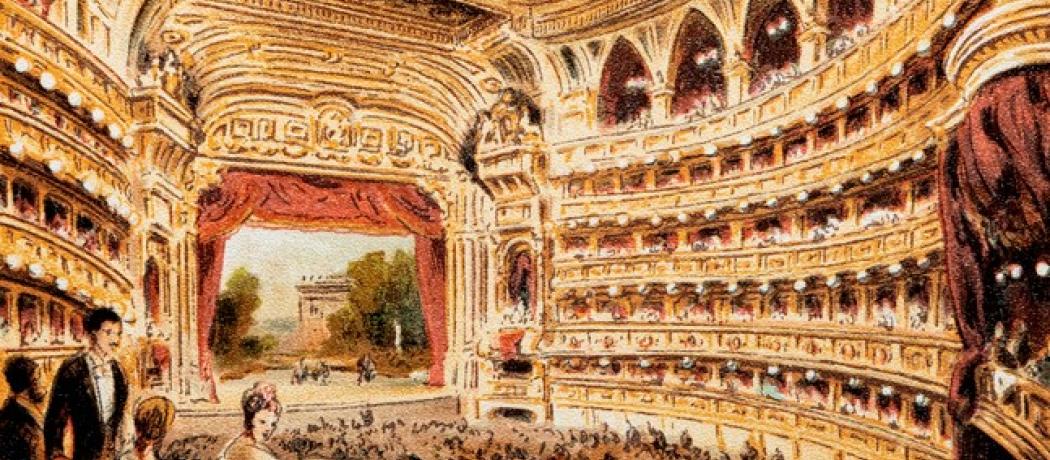Dr Stephan N. Willich, professor and director of the Institute of Social Medicine, Epidemiology and Health Economics at the Charité University Medical Center in Berlin, is a keen student of musical history and the representation of medicine in music. In 2006 he published “Physicians in opera—reflection of medical history and public perception.” Reviewing the close to 500 operas presented since the late 17th century, Dr Willich found forty in which physicians appear on the stage and medical issues are presented.
He found that the actors representing doctors are always male and always sing a voice registered in the grave chords. Portrayal of the doctor in the 18th century slowly evolved from a comic character of low social status, with his quackery emphasized, to the 19th century where there were major comic or tragic roles created for doctors.
In Verdi’s opera The Force of Destiny (1862), a surgeon removes a bullet from the chest of Don Alvaro, who survives the procedure, although he dies in another tragic entanglement. In La Traviata (1853), another of Verdi’s tragic operas, Violetta’s health deteriorates rapidly, probably because of advanced tuberculosis. Dr Granvil, her physician, offers sympathy and comfort; he stays with her until she dies. In The Tales of Hoffmann (1881) by Offenbach, short stories relate unhappy love affairs. One story is focused on Antonia, a gifted singer in a frail state of health. From her mother she inherited her voice, but also a heart condition. The notion of heredity was a recently developed concept at that time. Antonia’s pulse was fast and irregular and this was depicted musically by her voice and by the orchestra. Antonia displays the clinical signs of mitral valve prolapse, including fragility, dyspnea, anxiety, and the arrythmias. She sings and collapses on the stage. The doctor arrives and pronounces her dead; the singing may have caused her fatal arrhythmia.
By the 20th century some doctor roles were epic portrayals with biological themes—in addition to being a clinician, he is also depicted as a researcher. In the 1925 opera Wozzeck by Alban Berg, a doctor performs experiments on his patients, foreshadowing the Nazi era’s medical horrors. Psychiatric elements play an important role in a 1970s opera by Hans Werner Henze. The principal actor portrays a patient in a psychiatric clinic.
Presentation of a doctor’s function, basis of knowledge, and social status have changed over the history of opera, reflecting the changing public attitudes toward the medical profession over the last few centuries.
To further connect medicine to the public by way of music, in 2008 Dr Williche founded the World Doctors Orchestra. Some 100 physicians from all over the world perform three to four times a year in a benefit concert for medical aid projects. The orchestra promotes the conviction that neither national borders nor political or economic interests should limit access to basic health care. Their next performance will be in Copenhagen, Denmark, on 9 September 2023.
—George Szasz, CM, MD
Suggested reading
Willich SN. Physicians in opera—reflection of medical history and public perception. BMJ 2006:333:1333-1335.
Soriano JB. On doctors and their operas: A critical (and lyrical) analysis of medicine in opera. Chest 2018;154:409-415.
This post has not been peer reviewed by the BCMJ Editorial Board.
 |
| This work is licensed under a Creative Commons Attribution-NonCommercial-NoDerivatives 4.0 International License. |

